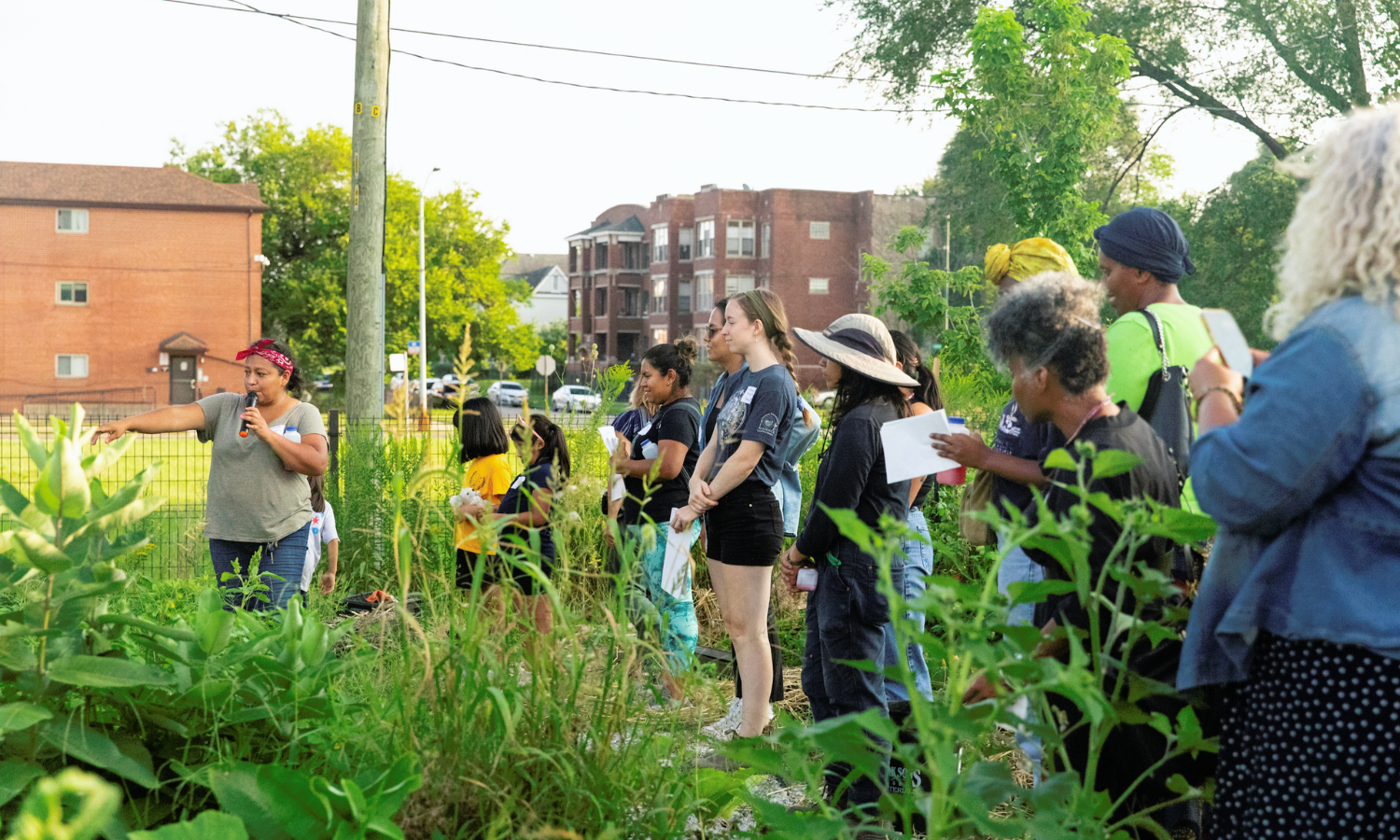In Chicago, Illinois, the Community Food Navigator is leveraging digital tools and community building to achieve food sovereignty for growers, sellers, and consumers. With a focus on Black, Brown, and Indigenous people on the city’s South and West sides, the organization hopes to address the structural inequities that these communities face in accessing healthy food and land.
The Community Food Navigator is an in-person and online hub that allows for the sharing of knowledge, resources, and connections. The Navigator was created in 2020, when “these different silos were forming, with different people doing the work of feeding people in an emergency time,” Sydney Coyle, the Communications and Engagement Manager at Community Food Navigator tells Food Tank.
Coyle explains that some of these silos were in contact with one another. However, there was a clear need for a central hub where “growers, producers, educators, and eaters” could connect and collectively create a food system rooted in justice and sovereignty. For the Community Food Navigator, this means that the people who produce, distribute, and consume food also control its production, distribution, and governance.
The Navigator’s app is helping them achieve this goal. Through this tool, people share locations and information about urban farms and gardens; job, mentorship, and volunteering opportunities related to urban agriculture; information on buying and selling agricultural goods; and much more.
Through the Navigator, “We’ve seen the transformation of vacant lots into places where healthy food grows, where soil is nurtured, where education happens, where jobs are created, and the community thrives as a result. We’re taking the matter of feeding ourselves into our own hands,” Ticina Williams tells Food Tank.
Williams is one of the Community Food Navigator’s most active participants. She is the manager at a farmer’s market, and through the Navigator’s app, uses her expertise to provide critical resources to her neighbors looking to take control of their own food system.
While the pandemic catalyzed the Navigator, there has always been a need for a central hub of knowledge about healthy food options for Black, Brown, and Indigenous communities in Chicago.
In the city, one out of six residents is at risk of being food insecure, according to the 2023 Chicago Food Equity Council Annual Report. But in predominantly Black and Brown neighborhoods on the South and West sides, food insecurity affects 56 to 85 percent of the population. In some neighborhoods, the percentage of residents with “low food access” as defined by the Chicago Health Atlas is as high as 99.85 percent.
“I live in Washington Park. We don’t have a grocery store, but we have about 5 liquor stores. If I want to get anything healthy, I have to go several miles west,” Williams tells Food Tank.
“And it’s not that we don’t care about our health, it’s that it was designed to be that way to make it difficult for us,” Williams continues. Chicago is the third largest city in the U.S., and the fourth most segregated according to Berkley’s Othering and Belonging Institute.
In the 20th century, “neighborhoods were given grades A-D, and the undesirable neighborhoods are where Black and Brown people were forced to live. These well documented discriminatory policies and practices have made it hard for Black and Brown individuals to secure land, capital, and other environmental resources needed to grow food,” Lisa Tallman, the Navigators’s Executive Director tells Food Tank.
Tallman says redlining is “often talked about in terms of housing, but it feeds into urban agriculture too. Because [Black and Brown people] are now in neighborhoods where industrial activity has devastated the soil, and where disinvestment in infrastructure has limited access to water.”
But those behind the Community Food Navigator choose to focus on abundance rather than scarcity. “The focus should not be oh we’re lacking, we don’t have, we’re a desert. Well, that may be true, but we have other systems that provide food to the community,” Williams tells Food Tank.
“Chicago is on the forefront of urban agriculture nationally,” Tallman tells Food Tank. It is through the Navigator that “we want to tell these stories. Of agricultural innovations, of traditions kept alive by Black urban farmers, of community care.”
Articles like the one you just read are made possible through the generosity of Food Tank members. Can we please count on you to be part of our growing movement? Become a member today by clicking here.
Photo courtesy of Davon Clark











